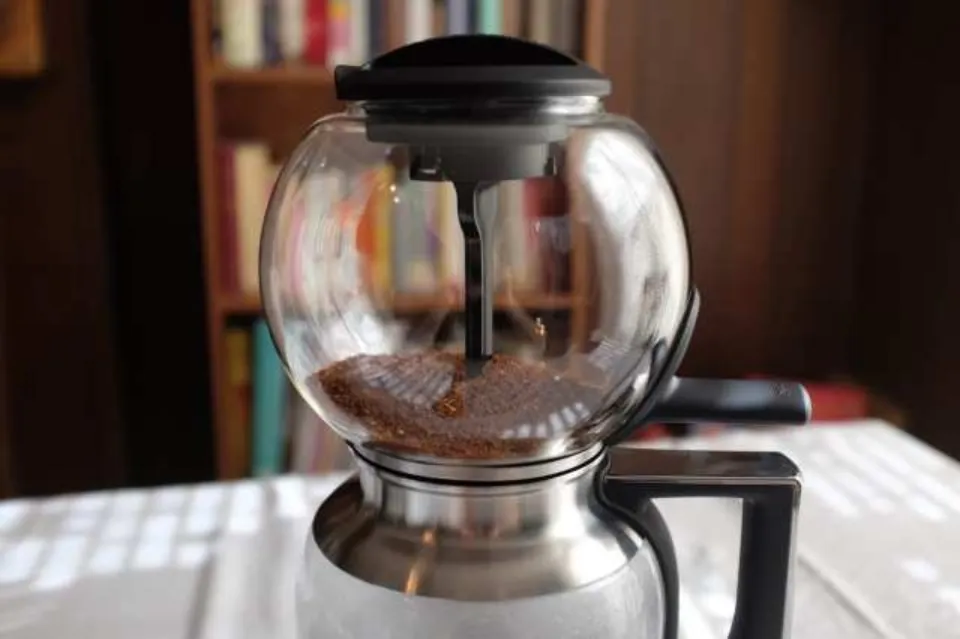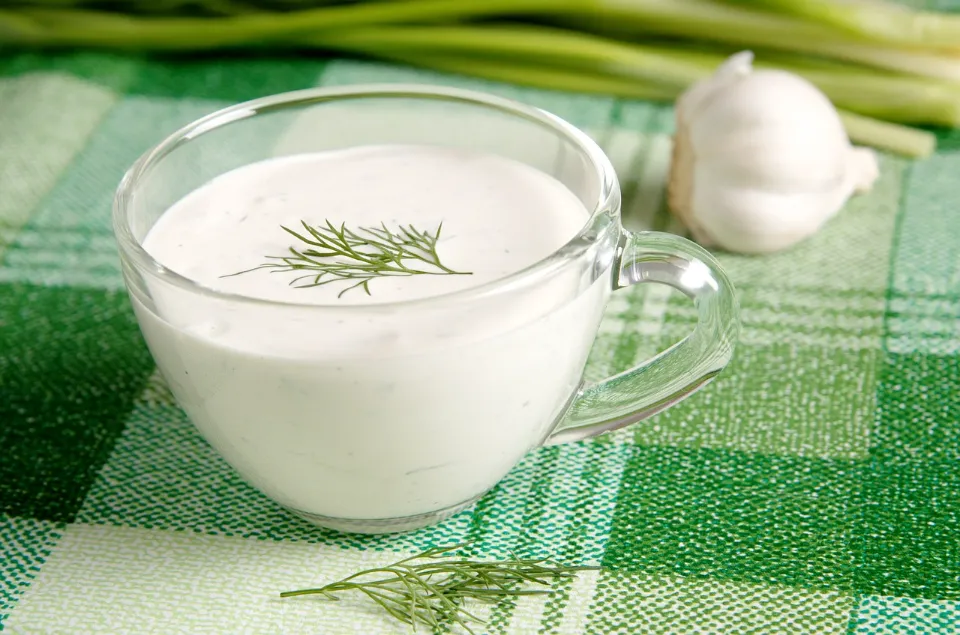Siphon brewing involves theater, food, alchemy, and skill in equal measure. Timer settings and careful attention to the heat source are required.
The KitchenAid Siphon Coffee Brewer is very user-friendly and consistently produces a surprising amount of good coffee. It made smooth coffee that was excellent.
The KitchenAid Siphon Coffee Brewer is a coffee maker that enables you to do just that, and we are here to tell you about it.
Pros & Cons of KitchenAid Siphon Coffee Brewer
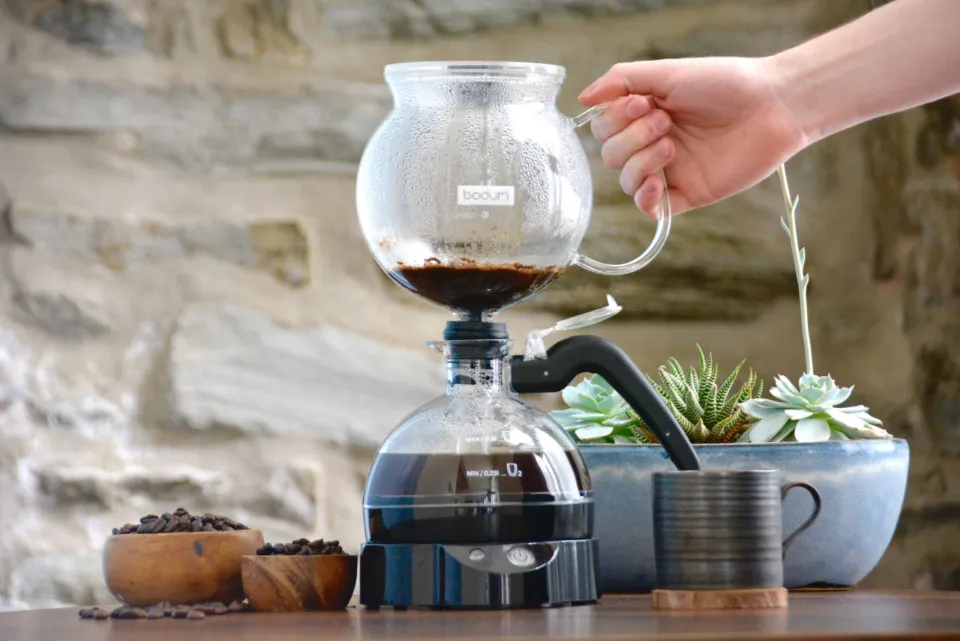
Pros
- User friendly compared to other siphon brewers
- Brews smooth and flavorfiul coffee
- Can choose mesh or cloth filters
- Unique style
Cons
- Expensive
- Complicated to clean
A Brief History of the Siphon Brewer
Before the siphon coffee maker was invented in the 1830s, coffee was brewed in just a handful of ways. The Ibrik Method, or modern Turkish coffee, is the oldest method and involves boiling coffee in a tiny pot with a long wooden handle. In the late 18th century, the notion that coffee shouldn’t be boiled gained popularity, and the Ibrik method started to lose favor in Western Europe.
Then, the market shifted toward the Biggins Pot, which essentially resembled a pour-over brewing system combined with a large pitcher. However, the time’s grinders and filter material both had a lot to be desired. Due to these issues, the water would frequently flow through the grounds either too quickly, resulting in inadequate extraction, or too slowly, resulting in iced coffee.
Siphon brewers, which were first developed in the 1830s, had the benefit of never letting boiling water directly contact the grounds, and the vacuum effect meant that even relatively finely ground grounds could be quickly filtered. So hot and tasty coffee was no longer a dichotomy for people to choose between.
KitchenAid Siphon Coffee Brewer Details
Ease of Use
The easiest siphon brewer to use on the market is the KitchenAid Siphon Coffee Maker. The knowledge required to use this device to make coffee is equivalent to turning on an electric kettle.
Putting it all together is the most difficult part of the process. Users have noted that it can be challenging to get the bottom chamber and brew chamber to mate. These components connect magnetically and with a twist. Other than that, the process is as simple as adding water to the bottom, coffee grounds to the top, and switching the unit on.
This coffee maker uses a mesh filter but also gives users the option of using a cloth filter, so you can select whichever one gives you the flavor you want without worrying about unintentional coffee grounds ending up in your drink.
Brew Capacity
The size of this group of brewers ranges from a single serving to well over a liter. Offering what KitchenAid refers to as 8 cups of coffee, this appliance is on the larger side. These “cups” have a combined capacity of 40 oz (1.1 L), and each one holds 5 ounces (140 mL) of liquid.
Since the minimum capacity is 15 oz/420 mL, this device will function properly when you’re only brewing for one person.
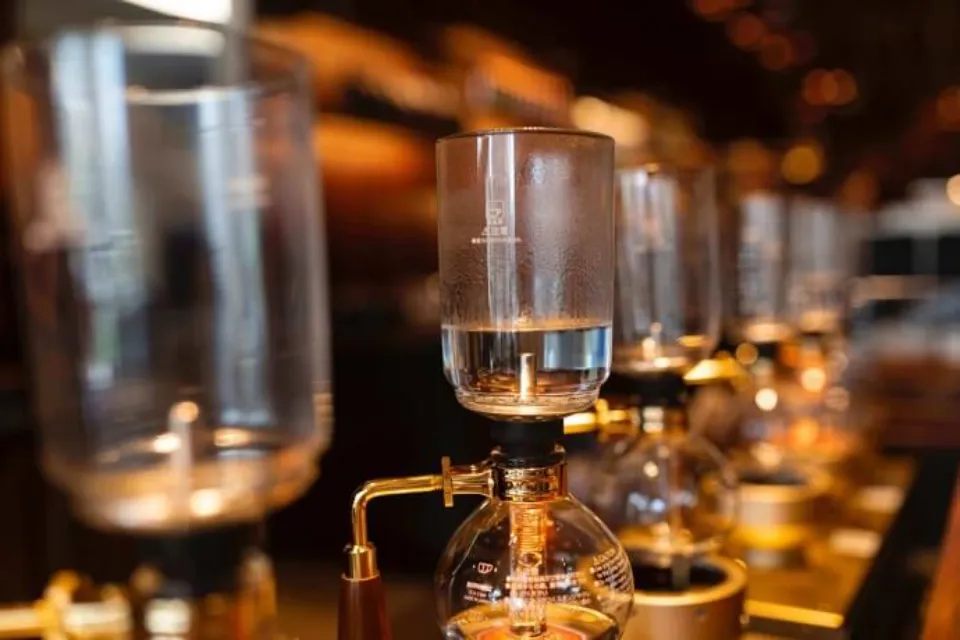
Build Quality
Like any KitchenAid product, the Siphon Brewer’s construction is generally of very high quality. The KitchenAid is constructed more like an intricate kettle than many of the rival coffee makers, which feature exquisite blown-glass works of art. The model includes lots of novel technology like the built-in heater and magnetic coupling collar, but results in a less aesthetically impressive product.
Some components that are usually made of glass are switched out for stainless steel versions, adding some extra durability. The machine has tastefully applied black metallic accents on the exterior that give it a high-end, contemporary look.
the upper chamber
Cleaning and Maintenance
While the combination of black steel and glass results in a fashionable and robust product, it also means that none of the components are dishwasher-safe, making cleanup a hassle.
A further restriction is that the glass carafe cannot be submerged in water due to the integrated electronic components of the base. KitchenAid provides an angled cleaning brush, but despite its inclusion cleaning is still a cumbersome process. Although this model is less delicate than some of its rivals, we still advise users to exercise caution when it comes to cleaning their brewer. It’s good to know that cleaning the mesh and cloth filter options is simple.
Value for Money
If you are committed to this brewing method but can’t be bothered to handle the timing yourself, then KitchenAid is a great choice. Automation does come at a very high cost, though. There is no need to purchase additional heating units because many of its rivals are only a third the price and some can be used over range tops. Although automation can be convenient, it’s not particularly difficult to learn how to use this method manually.
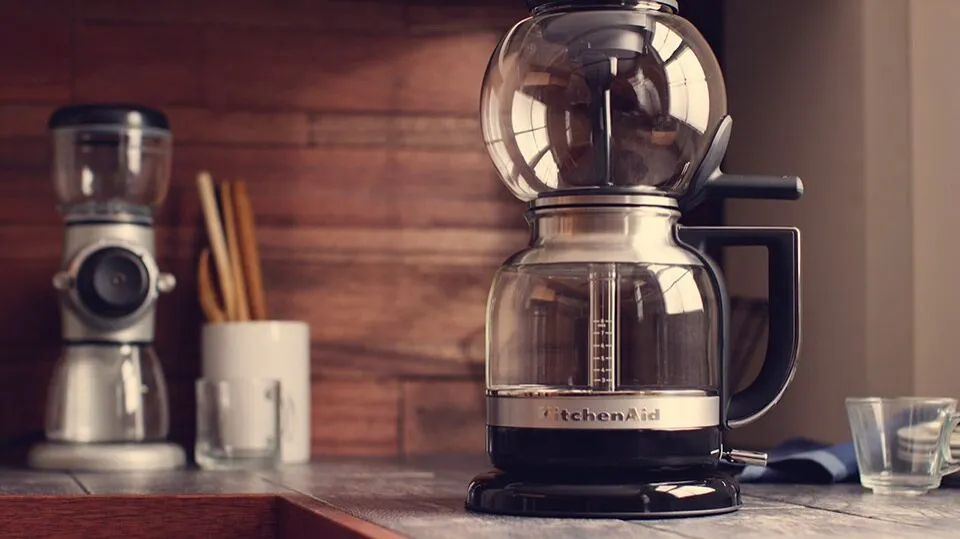
The Verdict
The KitchenAid Siphon Brewer excels at delivering the flavor and theater of making your cup of coffee in a cutting-edge siphon with the least amount of effort. While the machine is a little pricey and requires some cleaning effort, it makes a delicious cup of coffee and is entertaining to watch as it brews.
FAQs
Can I Use Pre-Ground Beans for Siphon Coffee?
You can use coffee beans that have already been ground. However, just like with any other type of coffee, freshly ground coffee beans will yield the best results. Siphon brewers do a great job of expressing the flavors of freshly ground beans, rewarding your effort more so than standard drip coffee makers. So, instead of wasting the flavor, choose freshly ground coffee.
How Does a Siphon Brewer Work?
To know how coffee makers work, we should be aware that when the water boils in the lower chamber, the steam creates pressure which forces the hot water up into the brew chamber. As soon as the heat is turned off the steam cools, creating a partial vacuum in the lower chamber. The water in the upper chamber is subsequently forced (not pulled) back into the lower chamber by atmospheric pressure.
Who Invented the Siphon Brewer?
Loeff of Berlin is generally credited with inventing the original device in the 1830s.

